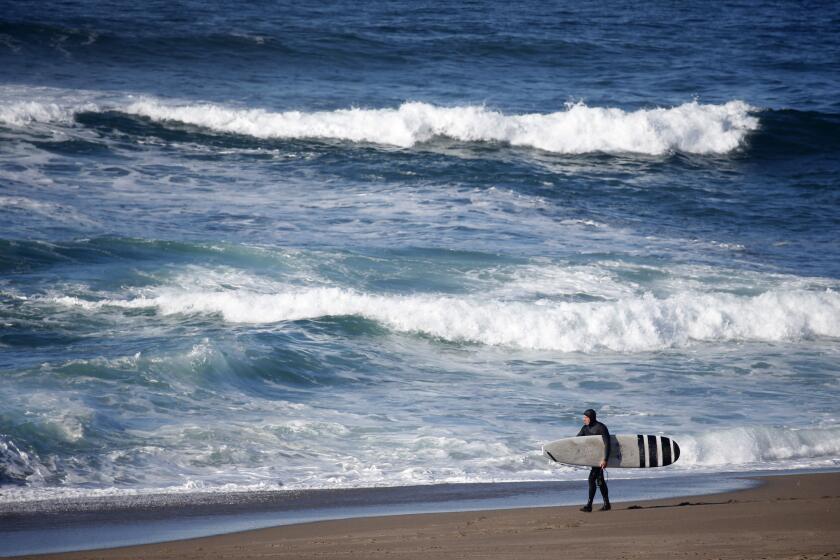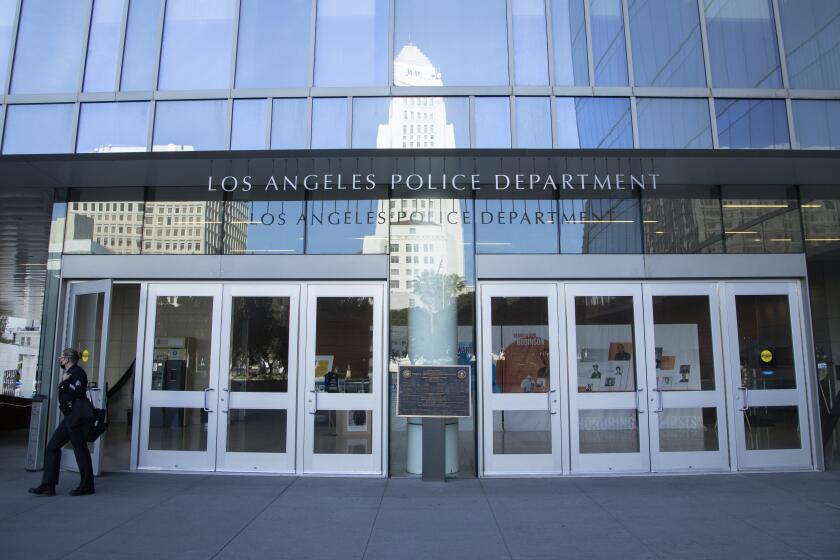NEIGHBORS : Ghoulish Tidings : Historian reports a 60% increase in calls concerning apparitions.
Local ghostbuster-historian Richard Senate doesn’t know exactly why, but there seems to be a significant increase in ghostly goings-on. Over the past month, said Senate, the number of calls that he has received concerning strange noises and sounds has increased by about 60%.
“I don’t know if it’s the economy, or something weird in the atmosphere,” he said. “It’s kind of a strange thing.”
Though ghost stories tend to be associated with old buildings, Senate said one woman called him recently about a problem she was having in a new structure. “A man’s arm, with no clothing, appeared to come out of a wall and grab the arm of the lady’s secretary,” he said.
Senate plans to investigate these situations further, but until he comes up with something solid, so to speak, county residents might want to consider this: “It was believed in olden times,” said Senate, “that before a big disaster, ghosts would become more restless.”
Quick quiz: This weekend there will be a Cajun Creole Festival in Simi Valley and a Native American festival (the “1st Annual Good Red Day”) in Ojai. So at which event will the Simi Valley Cajun band known as Gumbo La La play?
Of course, the Native American festival.
And now for the personal ad of the month--from another local publication. “Buff, affluent ex-LSD dealer seeks fox to help mitigate guilt from ‘80s excess. . . .”
We would have given him a call to see how the hunt was progressing, but he left no mailing address or phone number. Guess it had something to do with all that “excess.”
Back to Richard Senate: On Saturday he will lead a tour, starting at the Albinger Museum, of the aquaduct formerly used by the San Buenaventura Mission. Though the mission dates back to 1809, parts of the aquaduct are thought to have been around since 1790.
“Father (Junipero) Serra ordered the padres to put the water system in before they put in any kind of chapel,” said Senate. “He was pretty smart. No water, no agriculture--no agriculture, no mission.”
The ecologically progressive aquaduct ran for seven miles over creeks and gullies and through a filter system. The water was used and reused for fountains, laundry and drinking.
A trivia note: The water treatment facility was known as the El Caballo filtration building. Legend has it that it was named El Caballo (Spanish, for “The Horse”) because a fountain attached to it was shaped like a horse’s head. But Senate said pictures of the structure don’t support that story.
“Some say it’s a pig, some say it’s a goat, some say it’s a lamb,” he said.
Speaking of historic Ventura, the Olivas Adobe will continue to be relatively quiet through the summer while renovation continues.
The Ventura Department of Parks and Recreation, which maintains the property, is trying to make the mid-18th-Century structure as authentic as possible--and the people there are going to great lengths to do so.
To recreate the wood benches in the chapel, for instance, workers had to determine what kind of wood stain was most commonly used in California at the time. They ended up mixing their own traditional batch of beeswax stain.
More to Read
Start your day right
Sign up for Essential California for news, features and recommendations from the L.A. Times and beyond in your inbox six days a week.
You may occasionally receive promotional content from the Los Angeles Times.






